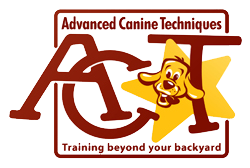Do you have your dog’s back?
If a loose dog came running up to you and your dog while you were on a walk, what would you do? Do you have your dog’s back? If a stranger came up to you and your shy dog in the store and asked to pet your dog, what would you do? Do you have your dog’s back?
Our dogs depend on us to provide leadership, structure, guidance and to have their back. If we fail to show them that we can protect them, many dogs take on that leadership role themselves and unfortunately, many of them are not equipped to handle that responsibility.
I see a lot of anxious, nervous and fearful dogs and many of them exhibit these characteristics because they are taking on a leadership role in the pack that they are not ready for. Many of them bark, lunge or jump uncontrollably, whine excessively, shake, whimper, chew or act out inappropriately.
When we provide clear communication to our dogs, it helps to establish a confident dog. When we enforce obedience commands and provide leadership to our dog, they gravitate to us. They recognize good leadership. Many trainers are successful because they expect certain behaviors from dogs and correct behaviors that are inappropriate. I think many people feel bad or worry the dog won’t like them if they enforce commands but the opposite is true. Dogs learn the expectations and then follow them in order for the pack to get along. If you create clear rules from the beginning, there is no confusion in your dog’s mind. This is especially true when you bring a puppy home or adopt a dog from a rescue or shelter. The best gift you can give all dogs is clear communication, structure and leadership.
Often owners are frustrated because their dog ate something (or many things) they shouldn’t have, bolted out the door, chewed up something valuable, broke something, jumped up on someone or had multiple potty accidents in the house. If we help create structure and routine by limiting resources (space, attention, food, toys, petting, etc), the dogs learn to work for those resources. I think dog trainers are often successful with dogs because we don’t have any history with your dog. They didn’t chew up my items, run out my door, pee on my floor or jump on my grandmother. I don’t have any of those frustrations and can approach each dog with a clear mind.
Once we teach you how to communicate with your dog, your relationship gets so much better. I love the calls, texts or emails a week or two after a class or lesson when the owners are enjoying their dogs 100% of the time. I also love teaching the place command. Place means chill out on the bed, rug, or matt for a specific amount of time. It teaches dogs independence and how to be calm in various situations (with and without distractions). People don’t call me because their dog is too calm. It never happens. I also don’t feel sorry for my dogs or the dogs I work with. I am teaching them commands to help them be successful in my house and in my pack. My state of mind is important in helping my dogs be successful.
Being on place doesn’t make your dog sad or mad. It is state of mind and the more we reward calm in the house, the more it becomes a default behavior. (With that said, it is our responsibility to provide enough mental and physical stimulation for your dog). That, however, is another blog. Give your dog the gift of leadership and enjoy this Thanksgiving season and make sure to have your dog’s back!
